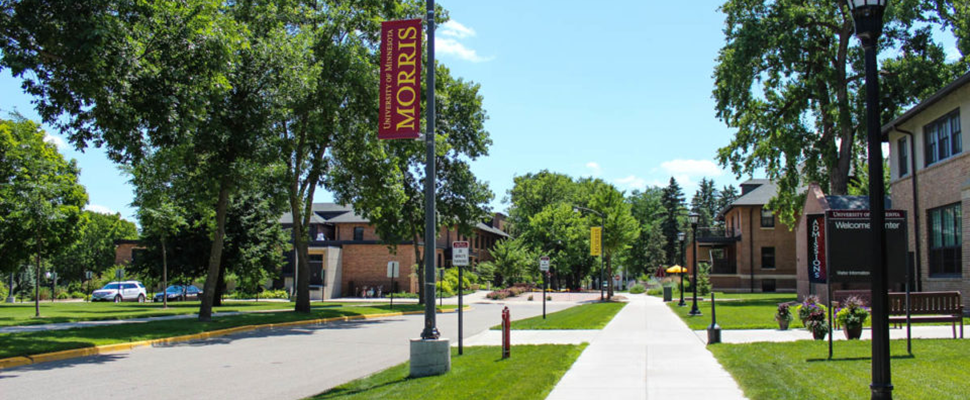
Morris, Minnesota
Study and planning
Higher Education
918,000
24
University of Minnesota Morris Carbon Neutrality Report
“This is our second project that we’ve worked on with Ever-Green. What was tremendously valuable, on top of the knowledge and expertise that they brought, was that they were willing to work with our students and provide an outcome for us that was outstanding.”
Bryan Herrmann, Vice Chancellor for Finance and Facilities,
University of Minnesota Morris
Download Project Summary
The University of Minnesota Morris (UMN Morris) was selected to participate in the first cohort of Ever-Green’s Roadmap to Carbon Neutrality. This program offers pro bono energy planning services to higher education institutions to outline campus-specific solutions that are financially and technically viable, with an implementable path to carbon neutrality.
Morris, Minnesota
Study and planning
Higher Education
918,000
24
University of Minnesota Morris Carbon Neutrality Report
“This is our second project that we’ve worked on with Ever-Green. What was tremendously valuable, on top of the knowledge and expertise that they brought, was that they were willing to work with our students and provide an outcome for us that was outstanding.”
Bryan Herrmann, Vice Chancellor for Finance and Facilities,
University of Minnesota Morris
Download Project Summary
The Roadmap to Carbon Neutrality findings for UMN Morris were presented in this report, which includes multiple approaches for UMN Morris to achieve campus carbon neutrality at its campus.
Highlights include:
Ever-Green worked with UMN Morris staff to gather data on the existing buildings’ generation assets, building mechanical systems, square footage, and occupancy.
Ever-Green used this system data to develop an energy consumption profile for UMN Morris. Once loads were established, energy supply and distribution options were evaluated, and capital investments and system life cycle costs were estimated in a 30-year life cycle cost analysis model. The model compares the costs and carbon profiles for UMN Morris to heat, cool, and power the UMN Morris campus under the business as usual scenario against several low-carbon energy solutions over that time period.
The University of Minnesota Morris is a residential liberal arts college in Morris, Minnesota that is one of institutions in the University of Minnesota institution. The school is a public land-grant institution that has been in existence since 1960 and currently has a student body of 1,600. It was one of the first public colleges to generate on-site renewable power from wind and corn cobs (through biomass gasification). UMN Morris approaches sustainability through academics, research, and on-campus initiatives. They were recently ranked as the #1 campus in the U.S. for producing the most renewable electricity per student on campus.